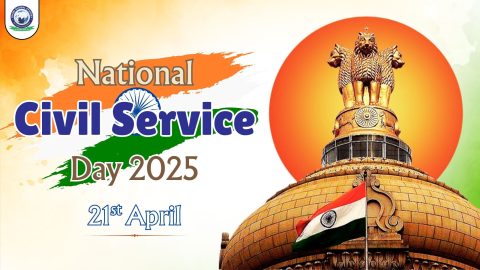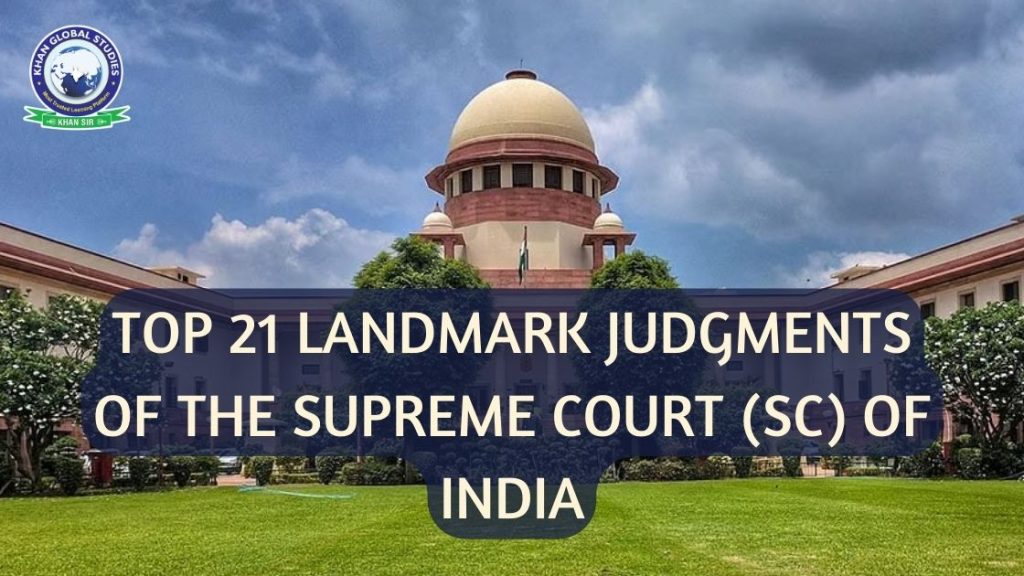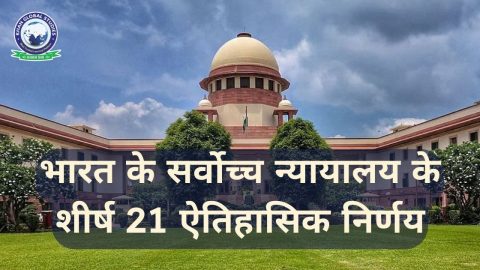The Supreme Court of India is the highest judicial body of the country. Since its inception, it has passed several landmark decisions that have transformed Indian democracy. Know here about the top 21 landmark judgements of the Supreme Court.
The Supreme Court of India is the highest judicial body and the most important part of the Constitution is the Legislature. This always works only when the executive oversteps its bounds and can make mistakes. Take a look at the top 21 pivotal decisions that shaped the future of Indian Democracy.
21 Most Important Landmark Judgements of the Supreme Court
- AK Gopalan vs. State of Madras, 1950
The Supreme Court argued that if the law had established the detention procedure, there would have been no violation of the fundamental rights enshrined in Articles 13, 19, 21 and 22 under the provisions of the Preventive Detention Act. Here the Supreme Court took a narrow view on Article 21. - Champakam Dorairajan vs. State of Madras, 1951
In this case, the court had banned caste-based reservations, calling it contrary to Article 16(2) of the Constitution. This case resulted in the first amendment to the Constitution of India. - KM Nanavati vs. State of Maharashtra, 1960
Naval officer KM Nanavati murdered his wife’s lover Prem Ahuja. Bombay High Court has convicted Prem Ahuja of murder. The apex court overturned the High Court’s decision and did not hold Nanavati guilty of murder. - Golaknath vs State of Punjab, 1967
The top court said that the law made by the Parliament shall not be such that it violates or takes away the fundamental rights of the citizens guaranteed by the Constitution of India. - Madhav Jiwaji Rao Scindia vs. Union of India, 1970
The infamous case, Madhav Jivaji Rao Scindia v. Union of India, deals with Article 18 of the Constitution of India. In this case, the Supreme Court declared invalid a 1970 Presidential Order that had abolished the titles, privileges and privy purses of the former princely rulers of India. - Keshavananda Bharati vs. State of Kerala, 1973
The Supreme Court empowered the Parliament to amend any part of the Indian Constitution, as long as such amendment does not nullify the fundamental rights of the citizens guaranteed by the Constitution of India. People also call this case a Fundamental Rights case. - Indira Gandhi vs Raj Narayan, 1975
The Supreme Court applied the doctrine of basic structure and invalidated clause (4) of Article 329-A, which was added by the 39th Amendment in 1975 because they held it to be beyond the amending power of the Parliament as it was part of the Constitution. This action destroyed its original features. - ADM Jabalpur vs. S.Shukla, 1976
ADM Jabalpur vs S. Shukla case, the top court pointed out that during a national emergency, the government suspends the right to approach the court to enforce fundamental rights under Articles 14, 21 and 22. - Maneka Gandhi vs Union of India, 1978
People consider this case a landmark case because it introduced a new and highly diverse interpretation of ‘life and personal liberty’ under Article 21 of the Constitution. At the same time, it expanded the horizons of freedom of speech and expression. A high level of judicial activism was seen in this case. - Minerva Mills vs. Union of India, 1980
The Supreme Court of India strengthened the principle of basic structure first enunciated in the Kesavananda Bharati case and held that social welfare laws should not violate fundamental rights. Some changes made by the 42nd Amendment Act were declared illegal. - SP Gupta vs Union of India, 1981
In the SP Gupta case, also known as the First Justice case, the court ruled that the President can reject the CJI’s recommendation for compelling reasons. However, the Supreme Court Advocates-on Record Association v. Union of India rejected this. - Rajan Case, 1981
Due to this matter, the then Home Minister K. Karunakaran was forced to resign and the officers involved in the custodial torture and death of the final-year engineering student were jailed. - Kehar Singh vs Delhi Administration, 1984
The court sentenced Kehar Singh, the murderer of the then Prime Minister Smt. Indira Gandhi, to death. However, the court has faced several questions over Kehar Singh’s death sentence. - Mohammed Ahmed Khan vs. Shah Bano Begum, 1985
Muslim personal law was challenged in this petition. The Supreme Court ruled in Shah Bano’s favor and granted her maintenance, which the Muslim community felt was an encroachment on Muslim Sharia law. After the decision of the case, All India Muslim Personal Law Board was formed in 1973. - MC Mehta vs Union of India, 1986
MC Mehta had filed a PIL regarding poisonous gases coming out of a plant in Bhopal. In this case, the Court expanded the scope of Articles 21 and 32 of the Constitution of India. This case is also famous as the Bhopal gas tragedy. - Ramesh Dalal vs Union of India, 1988
The case deals with the subject of pre-partition communal violence and its depiction does not violate any constitutional article. - Indra Swahe vs. Union of India, 1992
The Court upheld the implementation of the recommendations made by the Mandal Commission. This defined the “creamy layer” criteria. It also reiterated that the quota cannot exceed 50%. - Supreme Court Advocates-on-Record Association v. Union of India, 1993
It overruled SP Gupta v. Union of India. The court said that no one can take away the primacy of the Chief Justice in the appointment and transfer of Supreme Court and High Court judges. It recommended the formation of a collegium of judges for this. This case has been named the Second Judge Transfer Case. - SR Bommai vs Union of India, 1993
In this case, the Court reduced the power of the President under Article 356 of the Constitution of India. People also believed that secularism was the basic structure of the Constitution. - Babri Masjid, Ayodhya case, 1994
In the case, the Supreme Court questioned the constitutional validity of the acquisition of an area adjacent/adjacent to the disputed site and maintained the status quo on the disputed structures. - R. Rajagopal vs. State of Tamil Nadu, 1994
In this case, the court declared that the right to privacy continues even when a matter becomes a public record and, therefore, the right to be left alone is part of personal liberty.
FAQs
Question: What are landmark judgements of the Supreme Court?
Answer: Landmark decisions are those that set a precedent in law, or put forward a major new legal principle or judicial concept, or influence the interpretation of existing law in a significant way.
Question: Is the decision of the Supreme Court final in India?
Answer: The Supreme Court is the highest judicial court of India and the final court of appeal under the Constitution of India and is the highest constitutional court with the power of judicial review. The binding decision of SC can be reviewed in a review petition. Any party aggrieved by the order of the court on any obvious error can file a review petition. In keeping with the principle of stare decisis, the Supreme Court generally does not overturn a decision in the absence of a strong case.
Question: Is the Supreme Court more powerful than the Parliament?
Answer: The Supreme Court will have to work based on laws made by the Parliament. But, if any law violates the Constitution then the Supreme Court can also cancel the law made by the Parliament. Parliament can also amend the Constitution, but this is subject to the basic structure principle.





Should we consider revisiting and potentially amending the Constitution of India to better reflect the values and needs of our modern society?”,
“refusal